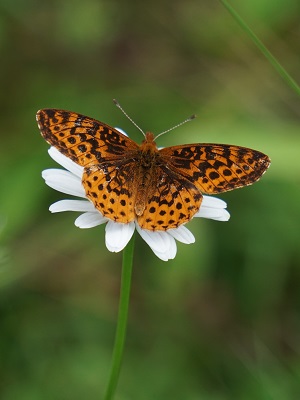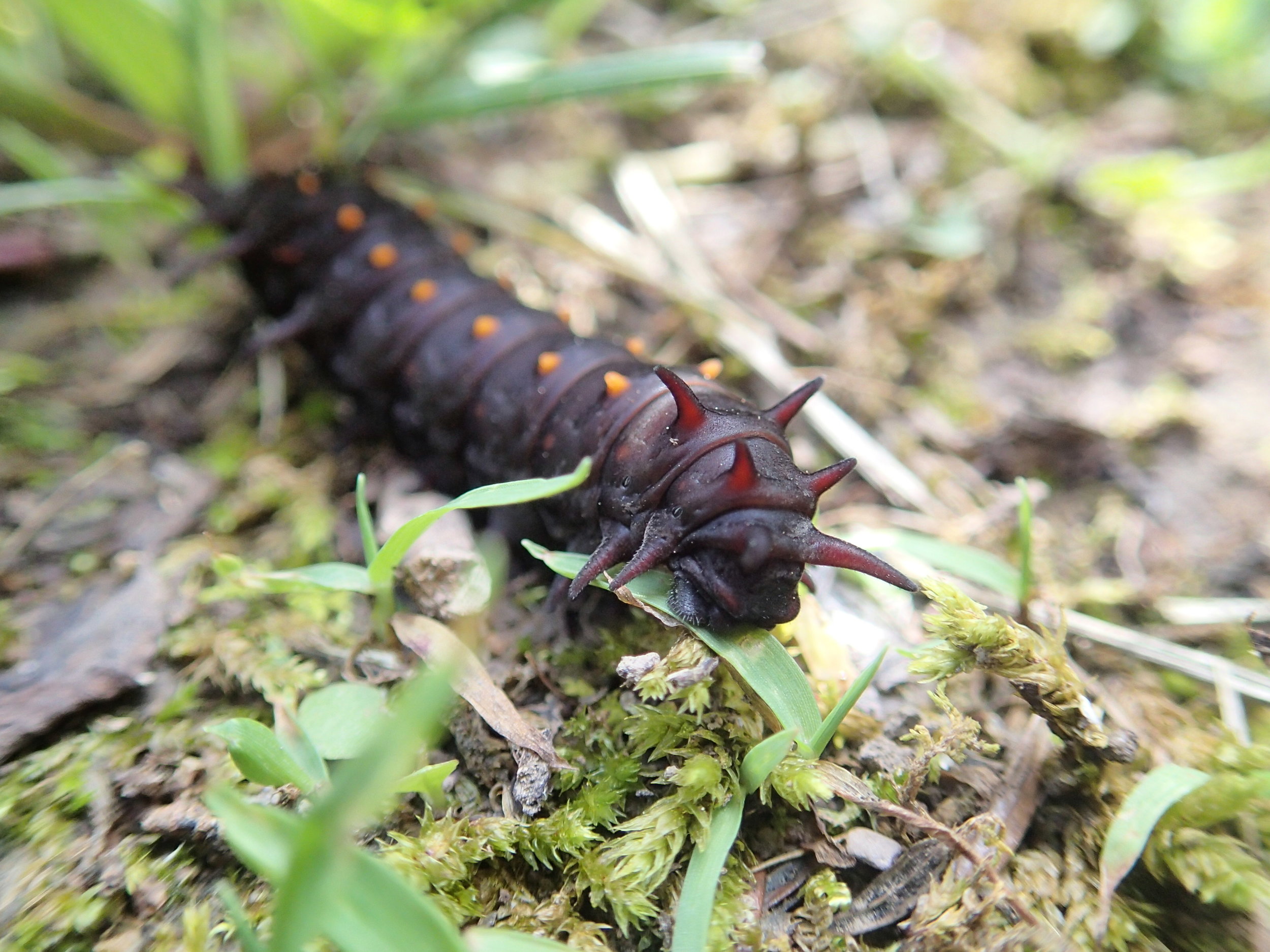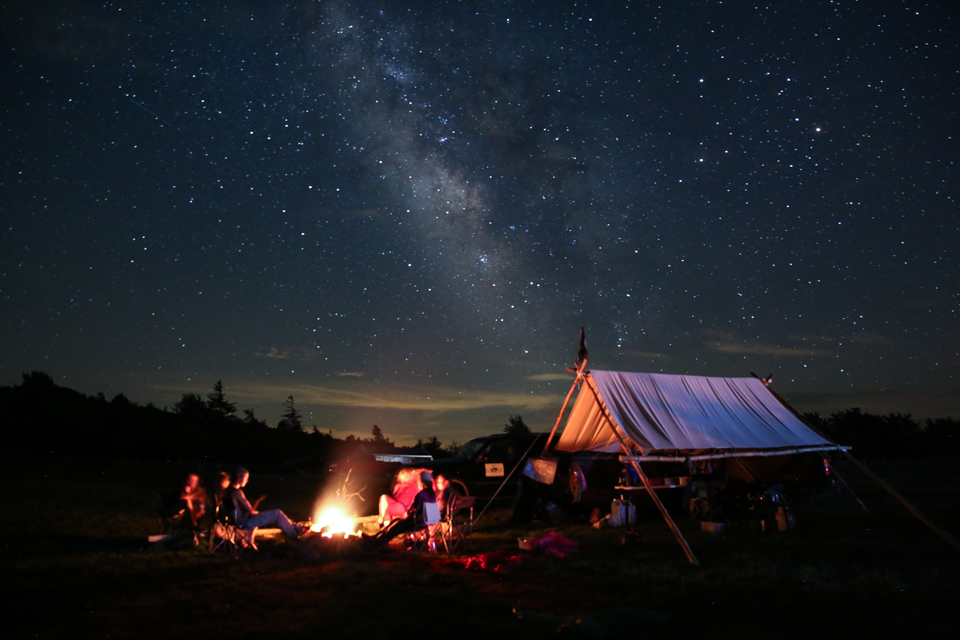Butterflies are one of the most beautiful elements of the natural world, and scientists now recognize that they can also serve as one important indicator of the health of ecosystems.
The Secret Life of Butterflies
Life history strategies on display!
This most recent BRDC visitor, a pipevine swallowtail caterpillar, gets its name from its obligate host plant, pipevine. The pipevine (or Dutchman’s pipe) is so named for its unusual lobed flowers that resemble Dutch smoking pipes. While the flowers’ shape makes them an unsuitable food source for adult pipevine swallowtail butterflies, the rest of the plant is essential for this butterfly’s life cycle.
These reddish-black, orange-spotted larvae feed exclusively on plants within the genus Aristolochia, which contain aristolochia acid, a toxin that the larvae ingest, making them distasteful and poisonous to potential predators. This toxin remains in the caterpillar’s body throughout metamorphosis and adulthood as a defense mechanism. Even the eggs retain this toxin when they are oviposited on the leaves and stems of the pipevine plant, ready to hatch out the next, hungry generation.
Here at BRDC we can currently see three different instars of the pipevine swallowtail caterpillar around the property!
An August Nature Ramble
We have enjoyed exploring the mountains around Boone for its considerable natural wonders. In August the birds have mostly finished breeding and reduced their vocalizations, so we enjoy watching insects and anything else in the natural world that draws our attention.
I was surprised to find that in August the most common large butterfly near Boone is the pipevine swallowtail.
Join BRDC for the Summer Naturalist Rally!
EXPLORE THE NATURAL HISTORY OF MOUNT ROGERS, THE CROWN JEWEL OF SOUTHWEST VIRGINIA
The Summer Rally gives us a chance to explore Mt. Rogers in a different season. We have assembled a wide variety of field trips with leaders who are experts in their field and able to make it understandable and interesting for everyone from inquisitive amateurs to accomplished naturalists.
Mount Rogers Wilderness Camp
Deciphering Nature's Signs
So much is happening in nature and in our human constructed world that we tend to ignore some of the most obvious events of the natural world. Plus there are literally thousands of sights and sounds vying for our attention and it takes a significant effort of will to focus and be observant. A certain training of the mind helps in watching even subconsciously for important clues and selecting them from the background "noise."
Lepidopteras on Display
In late July on our VA farm, the predominant color of the landscape is GREEN! But our 10 year old pollinator field is now predominantly yellow with the blooms of oxeye sunflower. This is a table set for the multitude of mouths of the lepidopterans (butterflies and moths), which are a prime food for birds.
Educational resource planted last Fall shows us life!
Biking for Natural History
Although the typical means of enjoying nature would be by walking, I have found that biking can be a great way to find natural wonders in any area which has biking trails. The rails to trails paths are ideal since they tend to be easy to ride while watching the passing nature show. One of our favorites is the New River Trail State Park in VA which has repaid repeated rides on the same trail segment to spot daily and seasonal changes in natural history.
BUTTERFLIES OF SULLIVAN SWAMP, GRAYSON HIGHLANDS STATE PARK
Our 2012 collaboration finished up in January of 2013. This project was a partnership with the Grayson County High School 2nd year art class and BRDC’s Project SiteSection. With this poster we will be helping to spotlight the globally unique habit that is Sullivan Swamp by illustrating the full list of butterflies documented by the SiteSection program.
























